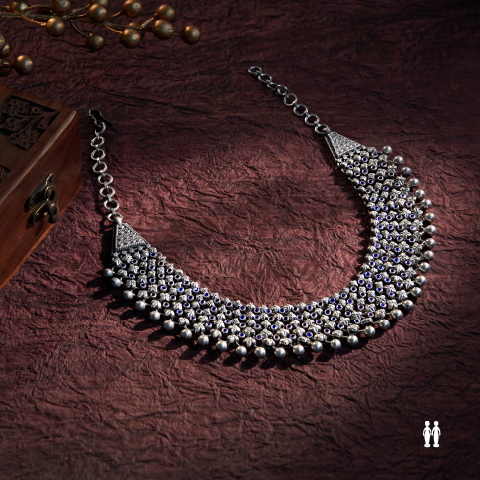Banaras, the spiritual capital of India, is also the abode to the most exquisite weaving cluster of the country. From the Vedic period to the Mughal era to the current episode in time, this land has been a temple for artisans and craftsmen who have perfected the art of brocade weaving over centuries. Over the years, the weaving ecosystem of Banaras developed its unique design language that revolves around its detailed motifs and embellishments. The essence of this drape is its artisans and weavers who transport you a bygone era through their unparalleled craftsmanship. One such Banarasi motif which holds a legacy in every stroke is Jaal, a delicate net-like pattern that is synonymous with this weave. Read through to learn more about the magic behind this majestic motif.
A classic style of Indo-Islamic decor, Jaal is the term used for an ornamental lattice screen that is built on the foundations of geometry and calligraphy. In Urdu, the word translates to 'a net' and was a highly prominent feature in Mughal architecture which involved carving symmetrical and repetitive geometric/plant-inspired designs onto stones. Apart from serving the purpose of visual appeal and aesthetics, it was created as a cooling device that offered shade from the harsh sunlight while simultaneously promoting natural lighting and good ventilation. The Mughal Empire was famous for its breathtaking monuments and tombs where the 'Jaal' is used in a multitude of ways across various structural elements. Right from the Taj Mahal and Akbar's mausoleum at Sikandara to the Itmad-Ud-Daulah and Fatehpur Sikri, one is beheld with an assortment of the most stunning Jaal designs and patterns. Although an interesting fact to be noted here is that this style of carved apertures, in its most basic form, has been in existence in India since the 8th century, particularly at the Kailasa temple in Ellora and Pattadakal temple in Karnataka.

From being a 16th-century architectural device to becoming an essential part of India’s design dictionary, the Jaal motif has evolved along with time but has retained the innate symbolism attached to it. In regards to the social norms of the community back in the day, it was also used as 'purdah' or curtain that helped separate personal affairs of the royals from the public gatherings, while allowing the inhabitants to view the court proceedings with a sense of privacy. Arsing from this narrative is the association of this design along with the feelings of intimacy and sensuality. They are also said to represent a divine light that shines through and is highly respected and revered.
A traditional taste that has transcended time and space, the concept of Jaal was derived by craftsmen who combined principles of art, mathematics and history. Its foundation lies in a simple geometric progression that is combined with the mystical beauty of Islamic calligraphy and floral patterns. With an evident presence in our culture and community, it does not come as a surprise that this design has been to muse to various other creative art forms, with the most popular one being textile design and weaving. Historians have written in detail on how Mughal Empress Nur Jahan was a great patroniser of all art forms and how under her artistic eye aesthetics and techniques from different principles and traditions were merged. The distinctive Jaal threadwork in Chikankari embroidery is one such inspired masterpiece.

Especially in tropical climates like India, Jaal or Jaalis are a great cooling mechanism that lowers the indoor temperature by compressing the hot air passing through the holes. The size and design of the grid depend on the regional climate and over time has been adapted to suit regional preferences as well.
Weavers make use of geometrical precision to construct the basic grid of a Jaal motif and then incorporate floral and fauna inspired designs to create distinctive and diverse designs. As an ancient weaving hub with immense wisdom that is passed on through generations of artisans, Banaras is home to many more indigenous and intricate motifs. At Sundari Silks, we aim to bring forth these wonderful works of art through our extensive repertoire of handcrafted weaves.






